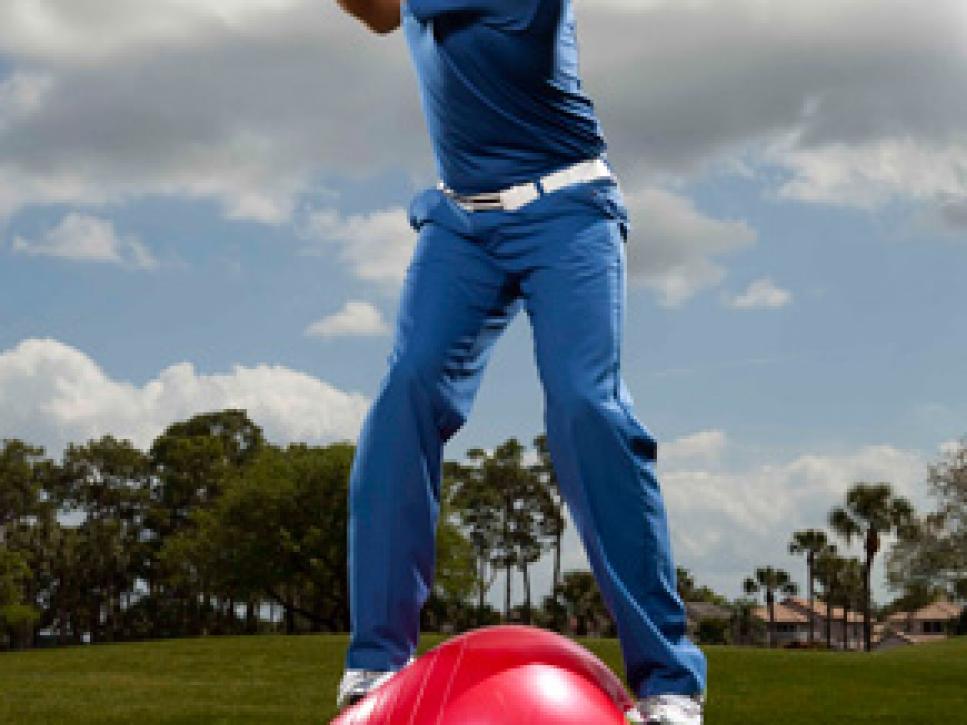The Loop
Fitness Friday: Just like life, your golf swing needs stability

I need to take a mulligan. In the past, I've written about and demonstrated golf-swing related exercises that were performed while standing on unstable surfaces. Things such as gel pads, Bosu balls, and physio balls were used. The thought being that your body needs to recruit more muscles and work harder on an unstable surface than it would in order to perform the same exercise on a stable surface.
It was a valid theory. You do have to work harder. However, it turns out these exercises do more harm than good to both your body and your golf swing. I'll explain. For starters, standing on unstable surfaces greatly increases the risk of injury. Any health benefit gained from having to work harder is trumped by the fact you can easily hyperextend a joint or tear a muscle. But even if you put the risk of injury aside, exercising on unstable surfaces is not a good idea because it makes it really difficult to do the movement with correct form. For example, if you're trying to mimic your golf swing while standing on something like a Bosu, all you're really doing is patterning a bad golf swing. Your brain operates an internal "shut-off switch" that will try its hardest to prevent you from moving beyond the limitations that the unstable surface provides. Think about what would happen if you tried to make your golf swing while standing on a frozen pond.
I recently spoke with world-class trainer Mike Boyle (@bodybyboyle) on this subject and he is in full agreement. If you don't know Mike, trust me when I say he is highly regarded by his peers and his training programs are among the best you can do. One thing I really like about Mike and what he teaches is that it constantly evolves. He's not afraid to admit that something he used to have athletes do is no longer part of their training regimen. For example, he doesn't have athletes trying to do deadlifts while standing on two gel pads. But he does, however, get them to do deadlifts on one leg. What's the difference? You still have stability while standing on one leg provided thesurface under the leg is stable. But trying to deadlift on gel pads could lead to a broken ankle or back injuries. So why do it?
So what about instability training for the upper body? Now that is OK. If your feet or legs have stability, then you are free to work in awkward environments. It's the difference between trying to pick up a 50-pound block of cement while standing in sand vs. picking up a 50-pound bag of sand while standing on a cement floor. So if you've been doing exercises while standing on unstable surfaces, please stop. And if you want an example of a great instability exercise for the upper body, watch the video below.
Ron Kaspriske is the fitness editor for Golf Digest.*
(Photo by Nathaniel Welch)